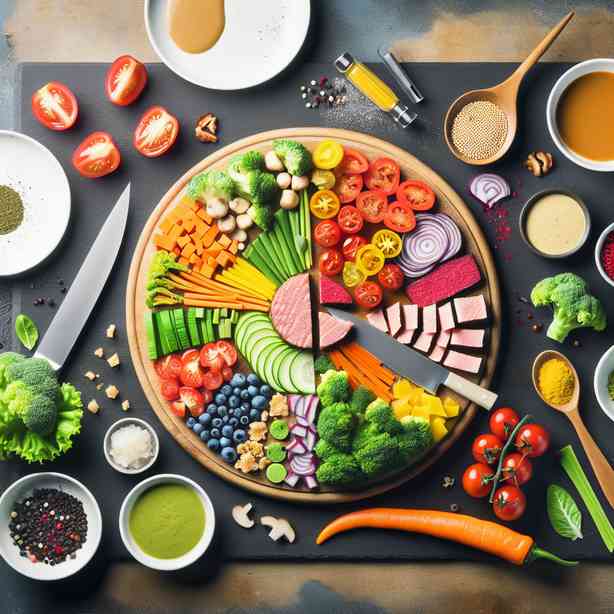
Deconstructing a dish often involves breaking it down into its fundamental components, allowing us to understand, appreciate, and recreate the essence of that culinary creation. This process not only helps in mastering the technique but also provides insights into flavor combinations, textures, and presentation styles that can be heightened or altered. In this article, we will explore the concept of deconstructing a dish through various dimensions, including its history, ingredients, preparation methods, and ways to personalize it to suit different tastes.
At the heart of deconstruction is the idea that every dish has a story, a history rich in cultural significance. For instance, take the classic French dish, Coq au Vin. Traditionally, this dish is a hearty stew made with chicken braised slowly in red wine, along with mushrooms, onions, lardons, and a bouquet garni. The history of Coq au Vin goes back to ancient times, where wine not only served as a beverage but also as a means of tenderizing meats, enhancing flavor and providing a deeper richness to the dish. Understanding this backstory is key when deconstructing it; one can respect traditional techniques while also experimenting with variations that speak to modern palates.
When deconstructing Coq au Vin, we can begin by separating each essential component. The chicken stands at the forefront, and its quality is paramount. Using a free-range or organic chicken can substantially elevate the dish’s flavors. Next, let’s consider the wine—ideally, it should be a robust red, like Burgundy, which complements the richness of the bird. By exploring the options available in the wine aisle, one can either stick to traditional pairings or venture into territory with unique wine selections from different regions, creating an entirely new flavor profile.
The next step in the deconstruction process involves the accompaniment ingredients. The mushrooms are not just an afterthought; they lend an earthy element that balances the dish. One might utilize different types of mushrooms, such as shiitake or portobello, offering varied textures and flavors. Meanwhile, shallots or pearl onions can add a sweet and tangy flavor, which is essential in complementing the wine’s acidity. Understanding the role each ingredient plays allows us to experiment with substitutes or enhancements, which can provide surprising yet delightful results.
Additionally, the bouquet garni, a classic composition of herbs, typically includes thyme, bay leaves, and parsley. This component may be herbaceous, but it is worth noting that it’s adjustable. Anyone can choose to infuse different herbs such as rosemary or tarragon, which can introduce an entirely new aromatic experience. This aspect of personalization is at the core of deconstructing any dish—adjusting flavors and components allows for a unique rendition that can cater to varied preferences.
Once the main components are meticulously selected, we turn to the preparation methods. Traditionally, Coq au Vin is a braised dish, requiring time and patience. However, modern cooking techniques such as sous-vide or pressure cooking can affect the final texture of the chicken, infusing it with moisture while shortening cooking time. For instance, sous-vide cooking allows for precise temperature control, resulting in perfectly tender chicken, yet it retains the classic flavors by cooking in the wine sauce.
Moreover, presentation cannot be overlooked. In a traditional sense, Coq au Vin might be served family style in a deep bowl, but deconstruction allows for creativity in plating. One could consider serving the chicken alongside a mushroom confit or arranging the dish in a more modern manner, perhaps serving components individually on a stylish plate. Such small changes in presentation can transform the dish from a hearty stew into an elegant fine dining experience.
As we deconstruct a dish like Coq au Vin, it’s also important to think about flavors and how they can be layered or contrasted. A balance of acidity, sweetness, and umami is fundamental. Introducing elements such as a splash of vinegar or fresh squeeze of lemon just before serving can provide an unexpected brightness that contrasts beautifully with the deep richness of the wine sauce. Such finishing touches can entice palettes and leave a lasting impression on those savoring the meal.
Ultimately, deconstructing a dish speaks not only to culinary mastery but also to the creative expression within the kitchen. It allows cooks of all levels to experiment, to explore, and to push the boundaries of traditional fare. As we’ve seen through this exploration of Coq au Vin, the process illuminates the importance of each ingredient and technique while allowing for a broader interpretation of classic dishes.
Thus, the next time you approach a cherished recipe, consider how you might deconstruct it and reinterpret it based on your unique tastes and inspirations. Engage with the story, embrace the components, and be fearless in your culinary endeavors. Through deconstruction, the ordinary can become extraordinary, and flavors can intertwine in ways you may not have previously conceived. The kitchen is a canvas, and each dish provides a unique opportunity to create art that is not just pleasing to the eye but also a joy to the palate.


